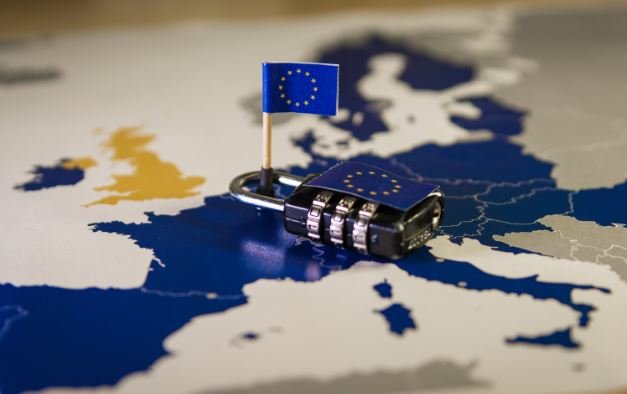
08-11-2022
For several European nations, the Schengen Information System (SIS) is a vital security precaution. The majority of visitors to Europe will be unaware that SIS exists. However, it is a critical mechanism for combatting crime, illegal immigration, and terrorism, and it protects both travellers and Europe.
Because the Schengen Area nations do not have border control checkpoints between them, SIS contributes to the area’s security by exchanging information among participating countries.
A variety of SIS modifications and improvements are planned to assist increase security and cope with irregular migration.
In this quick introduction, learn how the Schengen Information System works and whether it may effect your journey to Europe.
WHAT IS THE SCHENGEN INFORMATION SYSTEM?
The Schengen Information System (SIS) is an information database shared by Schengen Area and European Union nations to ensure border security. The European Commission is responsible for its upkeep.
SIS was established in 1990, following the elimination of internal border controls between Schengen nations and the implementation of a uniform visa policy in accordance with the Schengen Convention.
Authorities in many nations, including as police and border control officers, can utilise the Schengen Information System. Individuals or things can be added to the database for security purposes, and this data can subsequently be reviewed by authorities in all other participating nations.
WHAT DOES SIS DO?
The Schengen Information System exists to safeguard Europe. In the lack of internal border checks between Schengen nations, SIS is utilised to help authorities in member states in maintaining security.
It accomplishes this in three ways:
- Border control cooperation: border control authorities can create alerts regarding nationals of non-Schengen countries trying to enter the Schengen Area.
- Law enforcement cooperation: alerts can be created about missing persons and about individuals and objects of interest to a criminal investigation.
- Cooperation on vehicle registration: information on vehicles, number plates, and registration certificates can be shared between different national authorities.
These warnings are disseminated across all participating nations, allowing numerous authorities to identify and/or locate individuals or things of interest and, if required, collaborate.
WHAT IS AN SIS ALERT?
Authorities may utilise the system to search for alerts on certain individuals or items, or they can establish new alerts after an incident to keep track of the people or objects involved.
Alerts can be set up for the following:
- Individuals wanted for arrest
- Non-EU nationals who have been refused entry or stay in any Schengen country
- Missing persons
- Individuals whose assistance is required for judicial proceedings
- Objects to be seized or used as evidence in criminal trials
- Persons and objects for discreet or specific checks, e.g. for prevention of threats to public or national security.
Other forms of notifications, such as preventative warnings for children and vulnerable persons at danger of abduction, are being considered.
When creating an alert, the following information must be entered:
- Subject of the alert (the person and/or object)
- Why the person or object is sought after
- The action that should be taken once the subject is located
WHO CAN USE THE SIS?
The Schengen Information System is now available to the following authorities in member countries:
This list will be expanded to include boat and aircraft registration agencies as part of SIS reform and updating initiatives. FRONTEX will also have access to SIS alerts in operational categories.
Europol now has the authority to submit SIS alerts for third-country nationals under a new agreement. This will enable Europol and member states to share information about non-EU people who may pose a security risk.
WHICH COUNTRIES USE SIS?
The Schengen Information System is used by 30 European nations.
This comprises all 26 Schengen member nations (which is comprised of 22 EU member states, along with Iceland, Liechtenstein, Norway, and Switzerland).
Despite not yet being Schengen members, Bulgaria and Romania have full access to SIS (although they plan to join and are legally obliged to join, as EU member states).
Some non-Schengen nations have restricted access to SIS.
The United Kingdom and Croatia are solely linked to the Schengen Information System for the purpose of law enforcement cooperation. These nations do not have complete access to SIS data and are unable to issue alerts denying entrance and staying throughout the Schengen Area. The Republic of Ireland is planning a similar setup to connect to SIS.
Cyprus, which is required to enter the Schengen Area, is now preparing to join SIS.
HOW WILL THE SCHENGEN INFORMATION SYSTEM AFFECT MY TRIP TO EUROPE?
The Schengen Information System will not have any noticeable effect on most travellers arriving in Europe. The security it provides helps to reduce the risk of incidents while traveling to Europe by preventing crime and terrorism.
The SIS will only affect travellers who are sought after by authorities in the participating European countries, including:
- Wanted criminals or suspects
- People who have been involved in or witnessed a criminal incident in Europe
- Individuals listed as missing persons
- Individuals transporting stolen property
- Individuals who have previously been denied entry to or deported from a Schengen or EU country
- Travelers who require protection
In addition, visitors who commit any sort of offense during their stay may have a SIS alert created for them, which could cause issues with any future visit to Schengen and EU countries.
The majority of visitors should have no problem crossing the international border into the Schengen Area as long as they have a valid passport and the ETIAS visa waiver (or relevant visa).
The ETIAS will become available in November 2023 for citizens of a number of countries. It has the advantage of a simple online application process. The ETIAS application form is quick to fill in and eliminates the need to travel to an embassy.
ETIAS is itself another means of improving security for EU citizens.
Check the ETIAS requirements to see if you are eligible.
